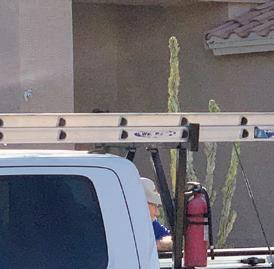




Aproposal to build 130 rentals at the northeast corner of Val Vista Drive and Knox Road saw a big pushback last week from neighbors who complained about potential traffic, crime and property value impacts.
Over a dozen property owners attended a


Higley Unified is “leaps and bounds ahead” of its peers when it comes to fostering the social-emotional growth of its students, district officials say.
The Governing Board recently heard the district’s progress in maximizing students’ academic and social-emotional skills, one of the goals outlined in HUSD’s 2022-23 Strategic Plan.
“We’re talking about defining very clearly what are the steps and the systems that we are building and making progress on,” Superintendent Dr. Dawn Foley said April 5. “We are doing an exceptional job …. We were behind and we are now leaps and
see HIGLEY page 8

virtual neighborhood meeting hosted by the developer April 10 on the project pitched for 10.54 acres, west of Crossroads District Park.
“I probably speak for the whole neighborhood,” said Liane Reid, who lives south of the site across Knox Road near 154th Street.
“We are all against this and you’ll probably have a fight on your hands.”
However, Reid added that the residents
would be more open to a proposal to build each home on a 1-acre lot.
Developer T.K. Stratton is seeking a minor General Plan amendment and rezone of the land, consisting of four parcels belonging to the Reber Family.
Plans call for twin-home-style development
see RENTAL page 16

LeRoy Brady has a lot to smile about this year. He’s the proud architect of the award-inning rose garden at Mesa Community College and is celebrating its 25th anniversary. The internationally renowned garden has grown under his supervision and with the help of volunteers from the Mesa-East Valley Rose Society. For the story, see page 19. (David Minton/GSN Staff Photographer)



An
Main number: 480-898-6500 | Advertising: 480-898-6559
Circulation service: 480-898-5641
Publisher: Steve T. Strickbine
Vice President: Michael Hiatt
ADVERTISING DEPARTMENT
Display Advertising: 480-898-6309
Classifieds/Inside Sales: 480-898-6500 | classifieds@timeslocalmedia.com
TJ Higgins | 480-898-5902 tjhiggins@timeslocalmedia.com
Steve Insalaco |480-898-5635 sinsalaco@timeslocalmedia.com
Advertising Sales Executive: Jane Meyer | 480-898-5633 jane@timeslocalmedia.com
NEWS DEPARTMENT
Executive Editor: Paul Maryniak | 480-898-5647 pmaryniak@timeslocalmedia.com
Managing Editor: Cecilia Chan | 480-898-5613 cchan@timeslocalmedia.com
Reporters:
Ken Sain | 928-420-5341 ksain@timeslocalmedia.com
Get Out Editor:
Christina Fuoco-Karasinski | 480-898-5631 christina@timeslocalmedia.com
Sports Editor: Zach Alvira | 480-898-5630 zalvira@timeslocalmedia.com
Photographer:
Dave Minton | dminton@timeslocalmedia.com
Design:
Veronica Thurman | vthurman@timeslocalmedia.com
Design/Production Supervisor
Courtney Oldham | production@timeslocalmedia.com
Circulation Director: Aaron Kolodny | aaron@phoenix.org
BY CECILIA CHAN GSN Managing EditorAtrailer-size mural featuring Gilbert’s recreational amenities will roll through town next month to solicit the public’s feedback on what it wants to see for future parks, trails and program offerings.
As it reaches build-out, the town is launching a number of initiatives to engage the community to help develop a 10-year Parks and Recreation Master Plan, a guide for future decision-making. The last plan was adopted in 2014 and took two years to develop.
“We’re trying to be ultra-aggressive with the master plan,” Parks and Recreation Director Robert Carmon said. “Really, we’ve just started.”
Carmona informed the Parks and Recreation Board April 11 on the department’s planned outreach efforts, which include numerous planned community meetings, digital engagement and the mural.
Staff also will visit with residents in local restaurants, pools and rec facilities.

To Start
call 480-898-7901
To get your free online edition subscription, please visit: https://www.gilbertsunnews.com/e-subscribe/
The
©
The mural will be placed for the day at each of the town’s parks and recreational facilities during their busiest times, allowing people to write on the mural what they want to see in Gilbert, according to Carmona.
“We’re really excited to see it roll through town,” he said. “The biggest thing is to meet people where they are at.”
Instead of holding three to four public meetings to solicit feedback, Car-
mona said the department’s doing the opposite by using the model, “meet you where you are at.”
Carmona told the board that the more feedback from the public, the better the plan will be at the end.
“We want to go to the council and say, ‘we really reached the community,’” he said.
According to Carmona, there’s been 3,000 visits to the master plan’s website already and unofficially the top three wants so far are more recreation centers and sports complexes – especially in south Gilbert, followed by finishing construction of parks and more multi-use paths and open spaces.
The 115-acre Desert Sky near Power and Pecos roads and the 272-acre Gilbert Regional Park near Queen Creek and Higley roads both debuted their first phases in 2019.
Some of the public’s online feedback so far for future amenities included a farm-inspired park, reflecting the town’s agricultural roots; a family restroom at Southeast Regional Library for nursing mothers; an aquatic center, indoor pickleball courts and more adult tennis clinics.
Carmona told the board members that they will be instrumental in helping sort through the public comments and coming up with a recommendation to council for the plan.
Consultants will be involved, tasked with duties including evaluating the levels of service and assessing recreation programs, budget, operations, staffing,
needs assessment and design standards.
The consultants also will hold workshops that will conclude with recommendations, priorities, implementation strategies, and an action plan.
A draft plan will be developed and presented for final approval.
Gilbert is expected to reach buildout in 2030 with a population of over 330,000. The current population is roughly 280,000.
Carmona also gave an update of the downtown’s Water Tower Plaza upgrade project, which is at 60% design completion.
“We’re looking at finishing the design in the summer,” he said, adding that it will take 11 months to construct with completion anticipated for September 2024.
Since the plaza’s debut in 2008, it has become one of the premier open spaces in the heart of the Heritage District and attracts thousands of visitors each year who go there for events or just to eat lunch.
But over time, the 0.7-acre park has aged and has out-of-date technology for the pump, electrical and irrigation systems.
The state House voted April 12 to expel Chandler Republican Rep. Liz Harris.
By a 46-13 vote, lawmakers accepted the findings of the Ethics Committee that the Realtor knew that someone she had invited to testify at a joint hearing on election integrity was going to present not just false but libelous accusations against lawmakers, judges and even the Church of Jesus Christ of Latter-day Saints, accusing them of being involved in a criminal scheme to rig elections and other crimes.
The committee also concluded that the freshman lawmaker was not truthful with them about what she knew ahead of time about what Scottsdale insurance agent Jacqueline Breger was going to say.
It takes 40 votes to oust a sitting representative.
Harris, whose district includes South Chandler and western Gilbert, said nothing in her defense during the vote or afterwards.
The closest Harris came to a comment was April 11 after the Ethics Committee report was released, when she told Capitol Media Services “God knows the truth.’’
But Rep. Alexander Kolodin, R-Scottsdale, said the decision to oust her versus some lesser punishment like censure was unwarranted.
“Liz Harris made an error in judgment,’’ he said. “She did something she shouldn’t have done.’’
And Kolodin said Harris “played shell games,’’ hiding from House leadership what Breger intended to say despite rules to the contrary.
“But expulsion sets a bad precedent,’’ he said.
What’s worse, said Kolodin, is that the grounds for expelling Harris is that her conduct damaged “the institutional integrity of the House.’’ But he said the people who sent Harris to the Capitol will not see the situation that way.
“They will perceive that they don’t have a true voice in this body because when they elect somebody to rock the boat and she does it, albeit in a wrong way, a way that should have been better considered, that member will be ex-
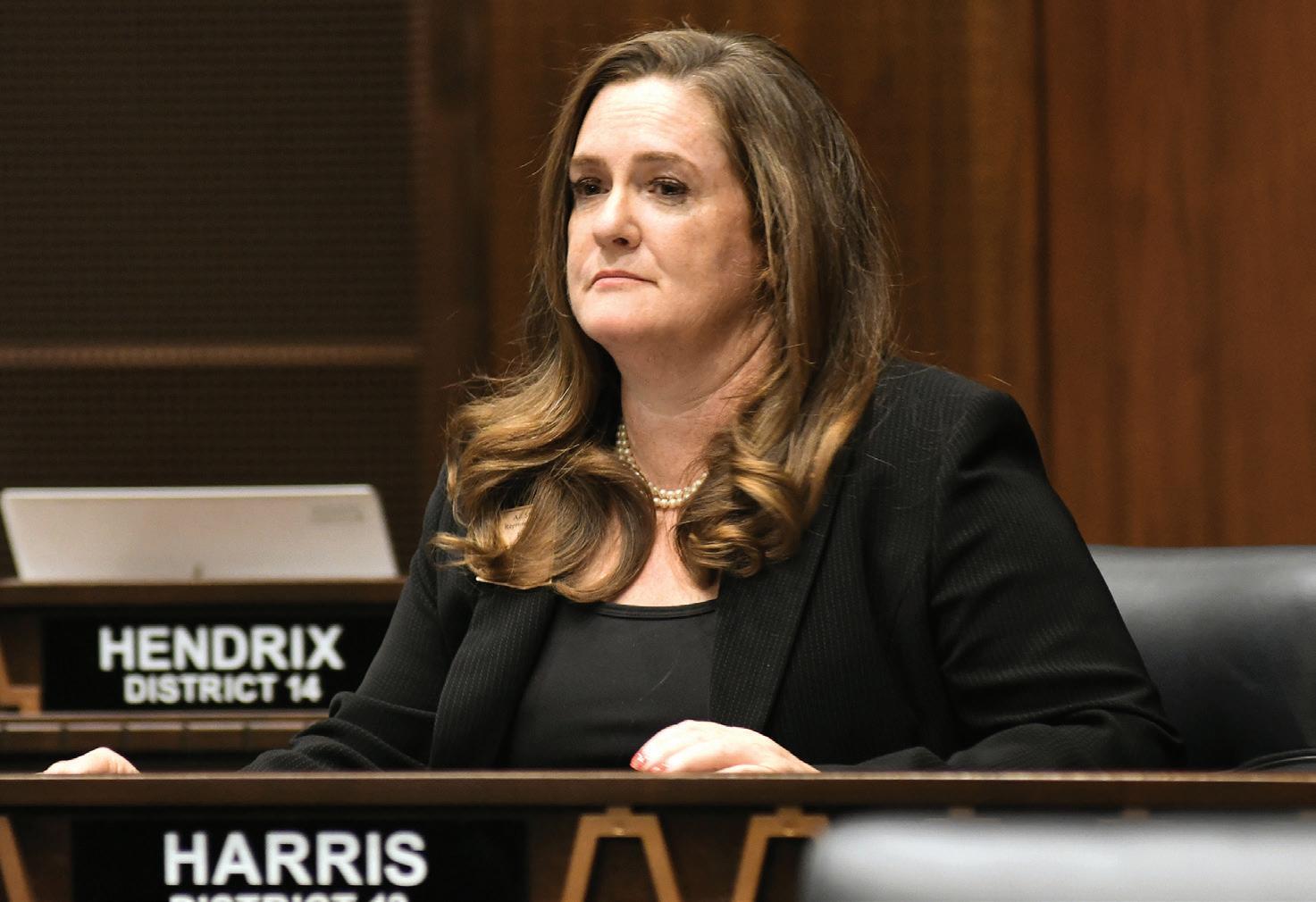
pelled,’’ Kolodin said.
And he argued it makes Harris a “martyr.’’
But Rep. David Livingston, R-Peoria, said the issue has to be seen from a larger perspective.
“This comes down to the integrity, in my opinion, of this institution and us as leaders,’’ he said. “This is not personal.’’
This is the first expulsion since 2018 when Rep. Don Shooter, R-Yuma, was accused of violating a House policy against sexual harassment.
What the ouster vote came down to was what did Harris know about the testimony that Breger was going to present at the February joint House-Senate hearing on election issues, when did she know it – and did she hide what she knew from House leadership so they didn’t pull the plug ahead of time.
Breger, armed with handouts, made a rambling 40-minute presentation of what she said were her “findings’’ of an investigation that showed alleged criminal schemes within Arizona, including money laundering, drug trafficking and sales, public corruption, bribing of public officials and election fraud.
More telling is she was naming names, implicating other lawmakers including House Speaker Ben Toma, R-Peoria and Gov. Katie Hobbs, as well as charging that these activities had been overseen
between Harris and Breger which undermined her claim of ignorance of the planned testimony.
The Ethics Committee probe was triggered when Rep. Stephanie Stahl Hamilton, D-Tucson, asked the House to censure Harris following what happened at that election hearing. That proposal was voted down by the Republican majority.
But Stahl Hamilton followed through with a formal request for an investigation by the Ethics Committee, the report that led to Wednesday’s expulsion vote.
“It is a sad and somber day for our institution,’’ House Minority Leader Andres Cano, D-Tucson, said of Wednesday’s vote. But he called it “necessary.’’
“There has been real and lasting damage to the lives and the reputations of people who did not deserve it,’’ Cano said. “Most importantly, the integrity of this House has been jeopardized.’’
by the Church.
“Harris knew or was aware that Ms. Breger would present these criminal allegations at the joint hearing,’’ the five-member bipartisan Ethics Committee concluded.
Kolodin said it also assumes that because Harris knew some of what was going to be presented that she knew it all.
But that was only part of the problem.
The report, adopted by the full House, said House rules required Harris, who was the primary organizer of the joint hearing, to present what Breger intended to present to leadership. She did not do so.
Kolodin was not convinced.
“It sets a bad precedent because it says we’re going to expel members for playing shell games and hiding the ball,’’ he said. “Well, if we start expelling members for that, there would only be a few occupied seats down here.’’
While Harris did not comment during Wednesday’s vote, Rep. Joseph Chaplik, R-Scottsdale, who chairs the Ethics Committee, said she was given “due process’’ and “an opportunity to tell her side of the story’’ to the panel.
And in its report, the panel rejected Harris’ contention during that hearing that she did not know what Breger was going to say. Committee members said there were text messages and meetings
Wednesday’s action sets in motion a procedure where the elected precinct committee members in her legislative district have to meet within five days and nominate three Republicans, like Harris, to fill her seat. The final decision is up to the Maricopa County Board of Supervisors.
Until that happens, Republicans may be unable to advance certain parts of their legislative agenda absent Democratic support. That’s because the vacancy leaves them with only 30 votes, with 31 needed for final approval of any measure.
Shooter’s 2018 expulsion, by a 56-3 vote, came after fellow lawmakers said he had a lengthy pattern of sexual misconduct that included propositioning a female lawmaker and making inappropriate comments to multiple other women.
In 2019, Rep. David Stringer, R-Prescott, who coincidentally was one of only two lawmakers besides Shooter who voted against the expulsion, resigned amid a similar move to expel him.
That came after an Ethics Committee investigation prompted by newspaper reports that he had been charged with sex crimes with a minor in 1983. That probe also was looking into comments he made on race and immigration that were widely denounced as racist.
Bob Christie of Capitol Media Services contributed to this report.

| 9am TO 5pm
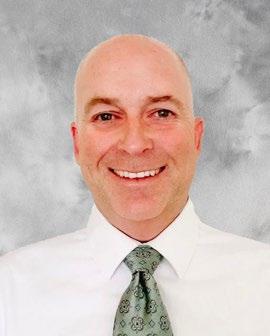

Ted
SOURCES: 1http://www.hopkinsmedicine.org/news/media/releases/hearing_loss_accelerates_brain_function_decline_in_older_adults_ | 2http:// www.hopkinsmedicine.org/news/media/releases/hearing_loss_and_dementia_linked_in_study_ | 3http://www.hopkinsmedicine.org/news/media/ releases/hearing_loss_linked_to_accelerated_brain_tissue_loss_ | 4http://www.hopkinsmedicine.org/news/media/releases/hearing_loss_accelerates_brain_function_decline_in_older_adults_ | 5Amieva, H., Ouvrard,

For the first since 2019, the East Valley Mayors’ Prayer Breakfast returns – just in time to address the timely and urgent issue of youth mental health.
For just the second time, the City of Chandler will the host the event that brings together leaders, businesses, and nonprofits from Scottsdale, Mesa, Chandler Gilbert, Tempe, Apache Junction, Queen Creek, Fountain Hills, Cave Creek and Carefree.
The event will take place at the Chandler-Gilbert YMCA at 1655 West Frye Road, Chandler, with a portion of the proceeds from the breakfast benefiting both the local YMCA and notMYkid, a Scottsdale nonprofit that provides behavioral health treatment, suicide preventions education and peer programs.
Chandler Mayor Kevin Hartke said the issue of youth mental health awareness comes at a crucial time because the pan-

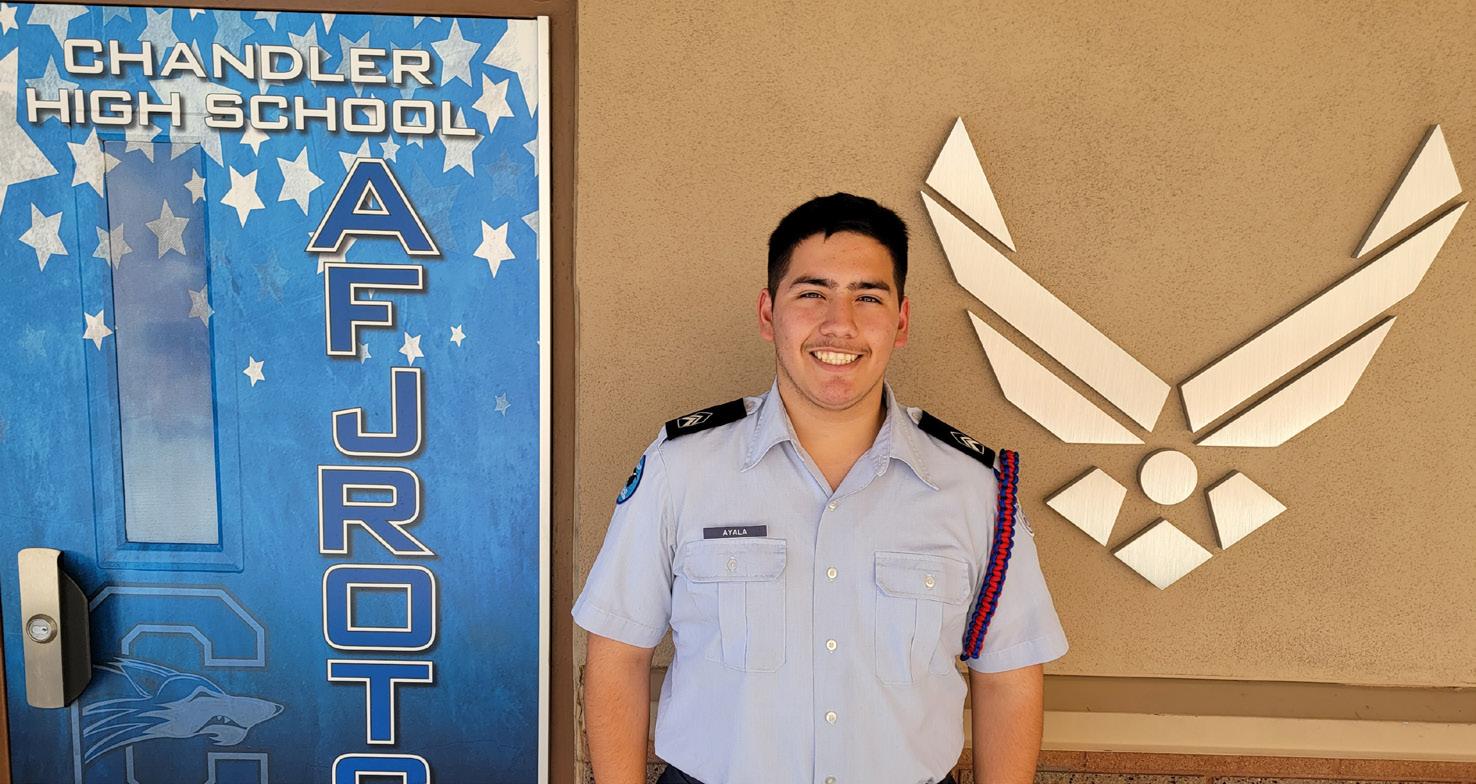
demic left many youth feeling isolated.
“Mental health and thoughts of suicide had been on the uptick with our society,” Hartke said. “And so that was our goal was to bring together questions and resources that people would be at least more equipped to know who to talk to,

Control and Prevention, the suicide rate increased 36% from 2000 to over45,000 suicides in 2020.
While only 3% of suicides in Arizona comprise people 17 and younger, that equates to 293 children and teenagers who took their life.
A big part of mental health derives from the stigma around seeking help, Hartke said.
“Social shaming is a massive, big deal and it can seem like the end of the world to many, but obviously, there’s life beyond everything,” he said.
to reach out to.”
According to the Arizona Department of Health Services, total suicides in Arizona have climbed 23% since 2017 to nearly 1,600 in 2022, and the national stats don’t look any better.
According to the Centers for Disease
Chandler High School senior Ramon Ayala heard from other students or witnessed himself when “most adults and students” propagate the stigma around mental health, noting that students can’t “freely talk about it” among even their closest friends.
“Some of them are being told that it’s wrong,” Ayala said.
see PRAYER page 13


HIGLEY from page 1
bounds ahead.”
According to proponents, social-emotional learning, often referred to as SEL, helps improve kids’ academic performance, curtail bullying, reduce dropout rates and build character by developing self-awareness, self-control and communication skills.
However, opponents see it as a cover to introduce elements of critical race theory into schools. State Education Superintendent Tom Horne, a Republican, has vowed to remove such programs from schools.
“Social emotional growth has taken on many different definitions depending on where you look,” said James Walker, director of Student Services/Title IX coordinator.
Walker said the district’s developed the Healthy Higley wellness initiative, involving partnerships with agencies and community resources.
“We’ve identified themes that include parent information sessions around topics such as resiliency, suicide awareness and drug prevention,” Walker said. “We’ve successfully implemented our tiered approach to our staff suicide-awareness training and we focused on proactive and preventative ways to overcome obstacles and to develop positive life skills.”
Walker said the district with its partners such as Community Bridges and the Arizona Army National Guard have presented to parents topics such as building resiliency, drug trends, the dangers of the social media app Snapchat and suicide awareness.
He said that the biggest take-away this year has been to initiate suicide awareness using a tiered approach in conjunction with compliance to the Mitch Warnock Act, which requires staff to be trained in suicide prevention.
All staff members have received suicide prevention training, Walker said.
“Our future plans moving forward are to continue on with the theme of resiliency,” Walker said.
He added that parent have asked how students can also receive information about suicide prevention, suicide awareness, drug misuse and dangers of social media.
“So, we’d like to move forward in the future to offer a parent presentation
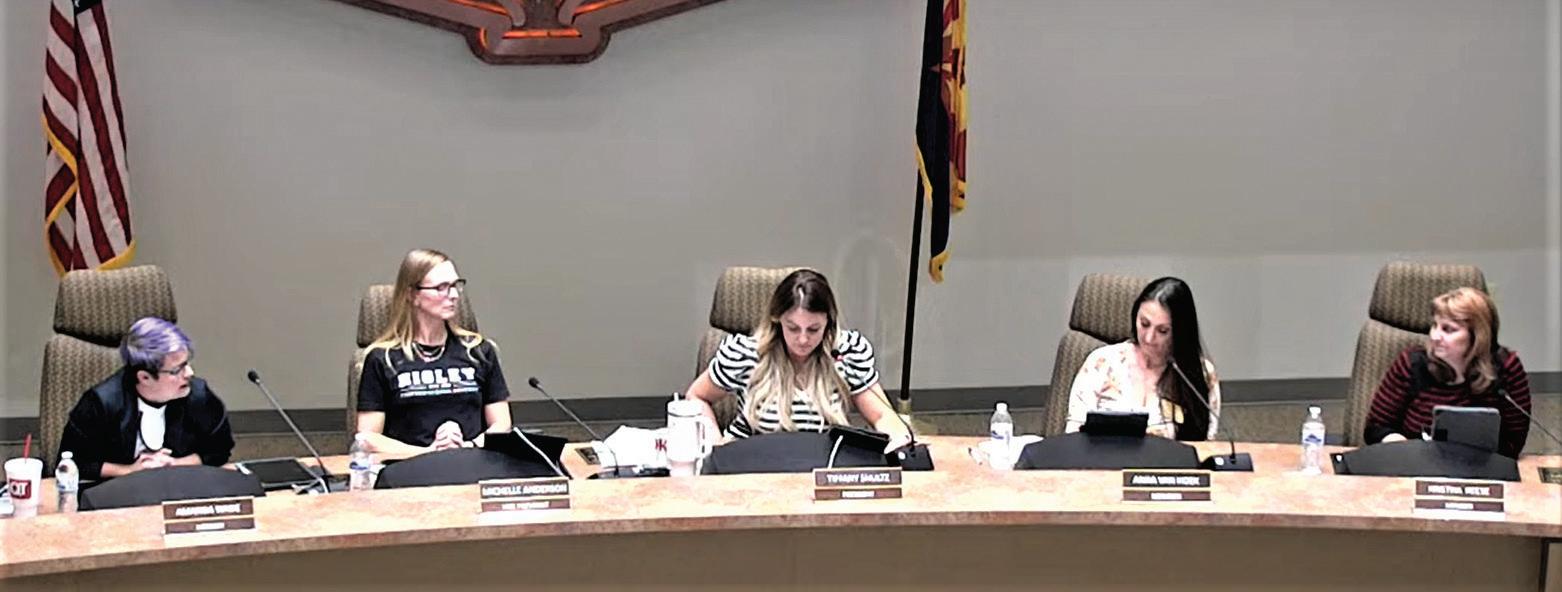
to include students after school hours at both district and school events and continue on some of the sessions are designed specifically for adults,” Walker said.
Board President Tiffany Shultz called the presentations “amazing.”
“I’m sad that we have to do them but I’ve attended several of them and the education around it is just wonderful for parents,” she said.
Board member and teacher Michelle Anderson said, “For those of you that know me, suicide is very real in my household. Here’s where I’ve had some enlightenment.
“Suicide rates, suicide attempts are higher in special-needs students, students with learning disabilities, students with physical disabilities.”
She said watching a training video on suicide prevention isn’t enough.
“I can clarify one thing,” Walker responded. “There were no training videos for our staff. It was all live direct training.”
Anderson applauded that effort and said she would like to see staff better trained on how to work with students with disabilities. She said one of the best professional developments she’s received in her career was learning how to read and utilize an individualized education program or IEP, which are for students who need extra help and support.
““We’re a school district and these are the children that are suffering,” she said.
Associate Superintendent Sherry Richards said that staff is already work-
ing on training teachers to have a better understanding of IEPs.
Foley said she appreciated Anderson’s perspective and that the entire school staff took the training seriously.
“Our goal is to not just do it but to do it very well,” Foley said. “We’re making sure that it’s sustainable and continues to be something that we’re not only doing for compliance because we have to but because we’re doing it for the very best of everybody, our professional development as well as for our families and our students.”
Board member Amanda Wade said a high school she taught at in Maryland used the Sources of Strength program, which changes the norms and behaviors surrounding suicide and increases social support and connectiveness among students.
One of the things it does is creates avenues for kids to know places that they can go, Wade said.
“Because sometimes a home may not be the place that you can go to get the assistance that you need or to get somebody to hear what you’re feeling,” she said.
Board member Anna Van Hoek said parents need to be notified first and foremost of a situation involving their children.
Wade said a school is legally required to contact parents if a student is a suicide risk and that the program she suggested gives students a safe place to express themselves.
It’s “because of this program that a kid’s friend went to a teacher to say, “I
think my friend needs this help,’” Wade said. “It creates ways for kids to look at it in a different way so it’s not something that we just don’t talk about or we just don’t have those things. And it also creates opportunities for more people to be aware.
“At the end of the day they do leave here and they are at home and home needs to be aware. It’s just the idea of identifying it. You want as many eyes and as many hearts as you can to care about the people in your orbit and that’s essentially what that was for.”
Walker said parental notification was another piece of suicide awareness.
“Any type of crisis is taken serious,” he said. “The expectation is that parents are made aware and they’re the first person that gets the phone call and then there is a soft handoff between the school and the parent. The No. 1 priority is to get the student to their parents and the parents can help them get further resources that supersedes what a school can offer.”
Board member Kristina Reese noted the importance of social-emotional support.
“We had a horrific situation over spring break with one of our students and those kids returning to the classroom without one of their students needed social emotional support,” she said. “They needed a crisis team, how to explain to a first-grader.”
“If a student can’t process, if they can’t figure out why their friend isn’t coming back, it’s a disruption to the classroom.
2020
BESTOF 2022
BESTOF 2022

BESTOF 2021
BESTOF2021
And when there’s a disruption to the classroom, it’s a disruption for their learning. We have to help them identify those emotions and put them to words and then they can also have those conversations when they go home and their parents can also support it.”
Van Hoek said she agreed that there are incidents where kids need that support.
“My concern is when it’s taught as a lesson and it’s across the whole school and we’re treating every child like they need that support versus individually when something occurs or if the child seeks that,” Van Hoek said.
“For instance, in my case it was added to my child’s IEP when she was 5 that she needed training on how to deal with emotions and work with other children. My only concern – and it’s not just mine
you know (but) many parents’ – is that it’s being taught to every classroom, every student and we’re treating like every child needs mental support when that’s not the case.
“So that’s the concern parents have when they think of social emotional learning because when you look at all the information on it that’s what it talks about.”
Wade said that all people benefit from being able to identify the emotions that they’re feeling.
“I think it’s wonderful and excellent when you have students who come from a home in which they have these types of conversations,” Wade said.
“These are the types of interventions that decrease drug use, it decreases the risk of suicide, it overall improves the learning environment because we have people who are dealing with big T and little T traumas at home.”


She added that from a teacher’s perspective, every single person in a classroom is better off by learning how to communicate to each other and that SEL overall helps with academic achievement by teaching students how to process their emotions.
Van Hoek, however, asked, “When do we find time for actual academics?
“We need to be able to concentrate at some point on the academics, on the core subjects that these kids are supposed to be learning and I don’t like the idea of turning our schools into mental-health facilities,” Van Hoek said.
“Yes, provide support to the kids that need it but we need to also concentrate and make sure that these kids are learning what they’re in school to learn.”
Wade said people misunderstand the length of time SEL is practiced in the classroom, which could be as simple as a
student check-in asking “how’s everybody doing today to start your day right.”
Resident John Mason was critical of the strategic plan and requested that HUSD hold at least three meetings to allow the public to ask questions and make suggestions to improve it.
“The district created a portrait of a graduate that lists numerous social-emotional learning goals,” he said.
“SEL is a controversial topic. Thus, I do not understand why the district would list so many controversial social-emotional learning goals. Do these goals truly represent the broad community residing in the district’s geographic boundaries?”
He said HUSD should explain the rationale for the goals, how the community participated in creating those goals and how the district plans to measure the achievement of the goals.


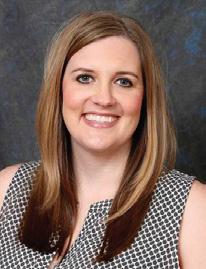

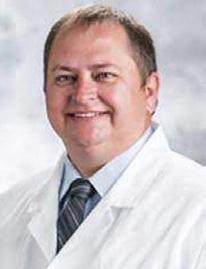

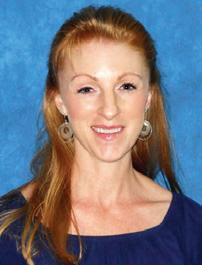





*this is a paid advertisement*
Mesa, AZ – When it comes to chronic pain and/ or neuropathy, the most common doctor-prescribed treatment is drugs like Gabapentin, Lyrica, Cymbalta, and Neurontin.
The problem with antidepressants or anti-seizure medications like these is that they offer purely symptomatic relief, as opposed to targeting and treating the root of the problem. Worse, these drugs often trigger an onset of uncomfortable, painful, and sometimes harmful side effects.
The only way to effectively treat chronic pain and/or peripheral neuropathy is by targeting the source, which is the result of nerve damage owing to inadequate blood flow to the nerves in the hands and feet. This often causes weakness, numbness, balance problems. A lack of nutrients causes the nerves degenerate – an insidious

As displayed in figure 1 above, the nerves are surrounded by diseased, withered blood vessels. A lack of sufficient nutrients means the nerves
cannot survive, and thus, slowly die. This leads to those painful and frustrating consequences we were talking about earlier, like weakness, numbness, tingling, balance issues, and perhaps even a burning sensation.
The drugs your doctor might prescribe will temporarily conceal the problems, putting a “Band-Aid” over a situation that will only continue to deteriorate without further action.
Thankfully, Mesa is the birthplace of a brandnew facility that sheds new light on this pressing problem of peripheral neuropathy and chronic pain. The company is trailblazing the medical industry by replacing outdated drugs and symptomatic reprieves with an advanced machine that targets the root of the problem at hand.

Effective neuropathy treatment relies on the following three factors:
1. Finding the underlying cause
2. Determining the extent of the nerve damage (above 95% nerve loss is rarely treatable)
3. The amount of treatment required for the patient’s unique condition
Aspen Medical in Mesa, AZ uses a state-of-the-art electric cell signaling systems worth $100,000.00. Th is ground-breaking treatment is engineered to achieve the following, accompanied by advanced diagnostics and a basic skin biopsy to accurately analyze results:
1. Increases blood flow
2. Stimulates and strengthens small fiber nerves
3. Improves brain-based pain
The treatment works by delivering energy to the affected area(s) at varying wavelengths, from low- to middle-frequency signals, while also using Amplitude Modulated (AM) and Frequency Modulated (FM) signaling
It’s completely painless!
THE GREAT NEWS IS THAT THIS TREATMENT IS COVERED BY MEDICARE, MEDICAID, AND MOST INSURANCES!!
Depending on your coverage, your peripheral neuropathy treatment could cost almost nothing – or be absolutely free.
The number of treatments required varies from patient to patient, and can only be determined following an in-depth neurological and vascular examination. As long as you have less than 95% nerve damage, there is hope!
Aspen Medical begins by analyzing the extent of the nerve damage –a complimentary service for your friends and family. Each exam comprises a detailed sensory evaluation, extensive peripheral vascular testing, and comprehensive analysis of neuropathy findings.
Aspen Medical will be offering this free chronic pain and neuropathy severity evaluation will be available until March 31st, 2023. Call (480) 274-3157 to make an appointment

Under current conditions, time is running out for Legacy Cares to turn the park around. The 320-acre park, which opened in January 2022, has been sued by contractors claiming they’re owed a total $30 million in unpaid bills. (Visit Mesa)
The sprawling Mesa sports facility formerly known as Bell Bank Park ran into turbulence last week that will force the removal of a lot of signs after both Bell Bank and Legacy Sports USA exited the facility.
tions, budget or management of the facility, nor did it make any debt or equity investment in the facility.”
Uncoupling the bank’s name from the facility will probably not be cheap. In just one example, “Bell Bank” is written in 50-foot letters on the roof of its indoor facilities.
Due to our very busy office schedule, we are limiting this offer to the first 10 c allers Y OU DO NOT HAVE TO SUFFER ANOTHER MINUTE, CALL (480) 274-3157 NOW!!
We are extremely busy, so we are unavailable, please leave a voice message and we will get back to you as soon as possible.
Aspen Medical
4540 E Baseline Rd., Suite 119 Mesa AZ 85206
*(480) 274-3157*
480-274-3157
4540 E Baseline Rd., Suite 119 Mesa Az 85206 April 30th, 2023.
All the changes are leaving workers on the ground in suspense.
The week started off with a bang with park sponsor Bell Bank announcing it was terminating a 10-year naming rights deal with the 320-acre park, which opened in January 2022, citing “various defaults” on the agreement and “public reports of financial concern at the facility.”
After Bell Bank’s announcement, park owner Legacy Cares said the park will be known as “Legacy Park: Arizona’s Premiere Sports & Entertainment Complex” until a new sponsor is found.
Bell Bank’s release suggested the bank was concerned about reputational damage from being associated with a money-losing facility that has missed scheduled loan payments since August and is in foreclosure litigation with contractors who allege that Legacy Cares owes them $30 million in unpaid bills.
Bell Bank stated in the release it had “no control or influence over the opera-
Larger tremors shook the park the next day: Legacy Cares reported in a public filing that it had fired park operator Legacy Sports USA and placed the facility under new management.
It also reported hiring financial firm Miller Buckfire to “investigate options” for the park’s future, including “a potential sale of the Borrower’s interest in the park.”
The Wall Street Journal, citing unnamed people familiar with the matter, reported that the options under consideration include filing for bankruptcy.
Legacy Cares is a nonprofit formed in 2018 that borrowed $284 million using the tax-incentivized municipal bond market in 2020 and 2021 to fund construction of the park.
The Arizona Industrial Development Authority served as a pass-through entity for the transactions.
For-profit Legacy Sports USA – run by
see PARK page 13
“Students don’t really like being compared to another student or someone else’s child,” Ayala said.
“When I was younger, academically I was really good,” Ayala said. “But once I got to middle school and high school, I started being compared to other students, talking about how they’re doing better than me, I should be able to do the same, possibly even better.”
But Ayala has his own accomplishments to be proud of – such as serving four years on Chandler High’s JROTC. He is the honor guard commander responsible for presenting the color guard at the prayer breakfast.
Even with its lowest enrollment of about 50 students, JROTC has helped Ayala surround himself with people who respect and patrol each other’s misbehavior.
“Everyone’s really helpful towards each other,” Ayala said. “They all care for one another and talking about it issues that’s going on with them.”
Ayala said he hopes the prayer breakfast brings “more awareness” for the mental health issue.
In one instance, Ayala became friends with a female student who eventually had confided in him some details about her struggles at home and with a relationship.
Ayala said friends and teachers told her “to deal with it.”
“The last thing I told her was ‘I love you’ since we had said that as friends,” Ayala said. “And when I told her that, I could see that something hit differently towards her.”
That happened the last day of school before spring break in 2022. The 14-yearold girl eventually took her life.
Ayala said the loss has “deeply affected” him.
“I didn’t know whether or not I made a mistake, but after that, I wish I was able to tell her more,” Ayala said.
When: 7-8:30 a.m. April 20.
Where: Chandler/Gilbert Family
YMCA, 1655 West Frye Road, Chandler
Tickets: Start at $50.
Information: evmpb.org.


Randy Miller and sons Chad and Brett, who were instrumental in conceiving the park and getting it built – entered into a management agreement with the nonprofit to run the park.
Legacy Cares said in filings last week that it has terminated its agreement with Legacy Sports and entered a new agreement with Elite Sports Group LLC.
The company was formed in February but little information is available in state records.
The rapid changes at the park are worrying some employees on the ground.
On April 8, Legacy Park General Manager Ron Koohbanani messaged employees: “Please be advised that your previously scheduled shifts at Bell Bank Park under OVG have been canceled.”
OVG is an acronym for Oak View Group, a national sports and entertainment company hired by Legacy Sports to help manage the park.
“Please understand that OVG is not
responsible for your wages starting Sunday (April 9). More information to follow,” wrote Koohbanani, who has only been at the helm four months.
Employees were in suspense for three days about whether they still had a job and who would be paying them.
They included Jeff Herman, a prep cook at the park’s G.O.A.T. restaurant.
“If we don’t get a schedule tomorrow, I’ll just show up Thursday and see what happens,” Herman said early last week.
On Tuesday, Herman learned he has a job with the new management company, but “they are only keeping certain employees onboard,” he said.
Legacy Cares President Doug Moss said in a statement to the Tribune that day-to-day operations will not be affected by the management change, nor will there be an interruption in payroll.
“No immediate job cuts are anticipated because of the management change,” he said.
see PARK page 18





Higley Unified School District will be paying more this year for a venue to send off its graduating seniors, prompting officials to talk about future options.

The Governing Board earlier this month agreed to set aside $125,000, which includes a $21,000 contingency, for the use of Arizona State University’s basketball arena. The district last year paid $84,000.
Higley and Williams Field high schools’ graduation is May 23.
“With that increase, are we gaining any services provided,” said board member Michelle Anderson, who pulled the item from the April 5 consent agenda. “Are they just literally taking money from public schools just so that we can have a graduation in their facilities?”
David Loutzenheiser, executive director of Secondary Education, explained that the district uses the ASU site because “we don’t have to worry about weather and we don’t have to worry about space where we limit our families.
“The rates have gone up since I’ve started doing this six years ago.”
Loutzenheiser told the board that the district was notified a few weeks ago that a new team handling contracts was in charge and that the rates for this year are increasing.
“Initially what they’ve said is their vendor costs, security, audio visual, the custodial all of those different rates have increased and therefore, they’re putting that onto us,” he said.


He noted there are only three other venues in the Valley – Footprint Center, State Farm Stadium and Arizona Veterans Memorial Coliseum –that can accommodate the district’s graduating class and families.
Superintendent Dr. Dawn Foley reminded the board that there’ve been a number of discussions about this issue already.
“Our families like to be able to bring multiple people to the graduation,” Foley said. “And when we host them in our own
facilities, football stands, we have to limit the number of people who can come.
“Plus it’s also very, very hot so hence the indoor place where people can have air conditioning as well as many individuals in the family come as possible has always been desirable.”
She acknowledged that the continually changing venue cost is also frustrating and challenging.
“Obviously, we’re hoping not to have to change anything for our families for this year,” she said.
“But it may cause us, if costs and prices continue to rise as they are, for future graduation ceremonies to have real serious conversations about whether or not we can continue to accommodate the air conditioning and as many individuals as you want at a graduation ceremony because of the fact that the cost is prohibited and that’s a reality of no matter where we go.”
Anderson said she wasn’t being critical about holding the ceremony at ASU but only that she was surprised by the cost increase.
“Do we not sign a contract when we commit to that space?” Anderson added. “And can we ask for a contract so that we don’t get slapped with these at the last minute.”
Loutzenheiser explained that the university gives the district a quote and then the quote is updated when HUSD puts in the purchase order.
“It’s always negotiable a little bit,” he said, adding that the cost depends on how many people attend the event.
“Last year our total cost for one school was $40,000, the other school $44,000 because one school had more people show up,” he said.
The cost per school is now $52,000 with $21,000 set aside in case the cost changes before graduation, according to HUSD.
Loutzenheiser said he’s talked with peer districts that also use the ASU venue and they’ve all received notification of rate increases.
Board President Tiffany Shultz asked if it was possible to work with other
see ASU page 15
All Gilbert Public Schools employees are getting a bump in pay next fiscal year.
The Governing Board in a special meeting April 11 unanimously approved a 3% raise for teachers, administrators and other certified professionals and a $1-an-hour raise for hourly wage earners beginning July 1.
“I really appreciate our staff and Dr. (Shane) McCord and the cabinet coming together and being able to find a way to do this,” board member Sheila Uggetti said. “It’s very well-deserving.”
Board member Jill Humpherys said she also appreciated how much work was done to achieve the pay increases.
“We as a board I think really want to make sure that our staff feel appreciated and well compensated, fairly compensated for their work,” she said. “I appre-
ciate the leadership that takes to make sure that we get those funds to the people who make a difference for our students, whether it’s teachers in the classroom or janitors or cafeteria people.
Board President Lori Wood reminded the public that the details for the salary increases were discussed a week prior by staff and the board.
“Although we aren’t exactly sure what the budget will look like because we don’t know until the Legislature finishes we are confident that we have the funds to do this,” Wood said.
“And it’s a priority that we make sure that we give competitive salaries to our staff, those who do again the heavy lifting each day with our students. We will find a way within our means to make this happen.”
Wood said staff presented a few different strategies to figure out how to do the raises.



tricts in order to get a discounted rate for this year “or something that’s a little bit closer to our original proposal.”
Loutzenheiser responded that other districts were having the same conversation as HUSD about the situation.
“You know unfortunately we don’t have a ton of leverage,” he said. “We’ve promoted this. Our families are going to be there. I would hate for a family who’s
having a large group fly in from out of town and then all of a sudden this switch and I have to say, ‘I give you four wristbands and come to the stadium.’
“I think that’s where we’re a little bit stuck on this year.”
He said the district could have some leverage for next year’s graduation.
“If we can all say we’re not going to go, or we’re not going to do it – all the school districts,” Shultz said. “Maybe we have some leverage.”


with one, two and three bedrooms in a mix of one- and two-story modern architectural buildings: 56 units would have one bed and one bathroom; 64 would have two bedrooms and two baths and 10 would have three bedrooms and two baths. Seventy-four units would be two stories.
Amenities included a clubhouse, swimming pool, walking path and a dog park, garages and 45% open space. A total of 250 parking spaces are proposed.
“We are very early in the process,” land-use attorney Reese Anderson said. “We do want your feedback and get your input so we can move forward.”
The development would be surrounded by a 6-foot-high solid wall with an emergency access gate for fire trucks on Knox at 154th. There are no pedestrian gates planned.
“We’ve lived here 27 years,” said a woman named Bonnie, who added that Knox Road is a private road paid for by the residents and that she didn’t like the idea of fire trucks using it. “If you want to use it, you have to pay for it.”
Reese assured residents that the emer-

gency access would only be used by fire trucks if Val Vista is blocked such as by an accident.
Douglas Reber said he’s lived on the property for 61 years and that the family is selling because his mother died over a year ago and they were settling the estate.
“What is the benefit to us with large properties to allow a dense development in here?” asked a man going by the handle mrjc480. “Why should we allow it?”
Anderson said the developer was just sharing the idea for the site.
“I assume you don’t like it?” Anderson added.

The man responded, “None of us here like it” and asked why not keep the zoning SF-43 and build 10 custom homes instead.
“It’s certainly possible,” Anderson said. “But this is what we are talking about tonight.”
Anderson said the proposal made sense otherwise the developer would not be doing it.
Chris Bowman asked Reber if he approached any of his neighbors to ask if they were interested in buying the land. Reber responded that he did not.
“It’s been on the market for some time,” Reber said, noting it was at one time in escrow but fell through.
Anderson asked if Bowman was interested in buying the property.
“I work in real estate,” Bowman said. “I wished I knew.”
He said there are people who would have purchased the property and built large-acre homes.
“Multifamily units tend to bring more crime, more traffic,” Bowman said, adding that there is a certain lifestyle enjoyed by the residents.
He said that lifestyle included raising farm animals and he didn’t want that to come into conflict with the potential renters.
“These are not $1,000-a-month properties,” said Reber, who said the rentals are targeted to professionals. “The community is fully self-contained.
“I don’t think anyone would settle here if they didn’t appreciate a rural environment.”
Stratton said he has a similar project in the Arcadia neighborhood in Phoenix.
He said the project is “for people
see RENTAL page 17


















who don’t want apartment-style living” but still want the amenities such as the Home Depot, SanTan Village mall and Top Golf nearby. He said a one-bedroom unit would rent for around $2,000.
Bowman said the developer presented the development as “high-end units,” and asked what made them think that people would want to move into a community built next to railroad tracks and an SRP generating station.
“You’ll make more money if you sold (the land as) 1-acre lots,” suggested Joseph Goetz. “People are dying for property to build nice homes.”
Goetz calculated 750 potential renters generated by the project based on the number of parking spots.
“That’s a lot of people,” Goetz said. “Please reconsider and sell the lots individually and make the neighborhood happy.”
He said the area already has too much traffic and that the project would decrease the property values of homeowners.
“We have farm animals here,” Reid said. “We have chickens that crow at 4 a.m. We have donkeys and sheep.”

She said she doesn’t want to face the possibility of the rental residents complaining about her animals and that it was hard enough trying to get out of her neighborhood with the existing traffic on Val Vista Drive, where a charter school and high school also are located.
Additionally, the two-story units would look into her backyard and back patio.
“I have a huge issue with that,” Reid said.
Chad Hatch said the proposed development on the south side of the property
is more intrusive as it has a “direct view of everything.” His home is about 300 feet from the site.
“Lot of people have swimming pools,” he said. “It makes it uncomfortable.”
He said the big concern is traffic and that Gilbert already has an issue with congestion.
“We don’t want to interfere with your lifestyle at all,” Anderson said. “Your lifestyle and what you do on your property won’t be affected.”
Statton added, “People moving into our communities are looking for privacy.”
Ryan Larson asked what process would be used to vet renters should the project be built and was assured that criminal background and credit checks would be done.
“I’ve seen too many apartments and condos go from high-end to Section 8 (low-income housing) because they can’t get people in there,” Larson said.
“It all happened in a year. I know no one wants to say that their product will go to government housing but I’ve seen it too many times in Phoenix – from fancy places to dumps in a matter of years.”
Stratton said that’s not the intention for the proposed project.
“The rent’s too high for Section 8,” he said. “It’s just a nice product. It gives people the feeling they are in a home and not an apartment complex.”
The next step in the process is to submit a formal application to Town planners for review before going to the Planning Commission for a recommendation to council.
The escrow on the property won’t close until all the approvals are in place.







Moss said of the management change that Elite Sports “is better situated to manage this amazing facility” than Legacy Sports.
There had been signs of a rift forming between Legacy Cares and Legacy Sports recently.
A January status report issued by an attorney in the contractors’ liens case stated, “The senior bondholders … are expected to require management changes to improve the performance of the complex.”
In February, Legacy Cares said in a public filing that its board of directors had rejected Legacy Sports’ proposed 2023 budget.
Herman, 69, said he is semi-retired and is mostly concerned about how the upheaval could impact his coworkers.
“If I leave, I’m going to retire permanently,” he said. “These kids, they have to leave and go somewhere else. … They have rent, they have children to support. They’re in a lot worse position than I am.”
Herman began working at the park with a former manager, who became the chef at G.O.A.T, but “after five months he got disgusted and left.”
Many of his coworkers also followed managers to the park, and Herman lamented that some of them left good-paying restaurant jobs to be at Legacy Park.
The setbacks have been piling on Legacy Cares in recent months.
After reporting in October that the park wasn’t generating enough revenue to cover its loan payments, Legacy Cares pinned its hopes on refinancing its debt with $400 million in new bonds.
Both its bondholders and its landlord Pacific Proving LLC – Legacy Cares doesn’t own the land it’s built on – agreed to forbear on exercising their rights under a default in order to give Legacy time to refinance.
That effort ended in late February when the park’s bondholder group rejected the terms of a refinancing plan offered by investment bank Loop Capital.
Meanwhile, unpaid contractors who worked on the park have been proceeding with foreclosure.
In a worst-case scenario for Legacy Cares and the landowner Pacific Prov-
ing LLC, that process could result in the county sheriff auctioning the property to the highest bidder to raise money to pay off the contractors’ liens.
Additional creditors have stepped forward, too.
An arbiter found Legacy Cares owed Icing Investments $2.4 million for unpaid consulting fees and damages. Field Turf USA initiated arbitration over a claim it is owed $5 million.
In March, Insight Investments filed a suit alleging that Legacy Cares has failed to pay rent for leased scoreboards, screens, lights and speakers and the company is due the full $16 million value of the equipment immediately.
Teams are continuing to pack the facility on the weekends, but negative reviews are starting to pile up online.
People are complaining about unstocked bathroom supplies and long waits to get in and out of the parking lot after games.
Herman said the restaurant has changed service frequently in the year since it’s been open.
“When I first started out there, it was (open) seven days a week, like 11 a.m. till midnight, and we had over 60 items on the menu,” he said. “Now it’s two-anda-half days a week and we have like 12 items on the menu.”
“The public has no idea what to expect when they go up there because it’s something different every week,” he added.
Over the long-term, brighter days could be ahead.
The Legacy Gateway Hotels project just north of Williams Field Road is up for final approval by Mesa City Council on May 1. This three-hotel, 365-room complex will sit across the street from the park, and it could help alleviate traffic and parking issues at the complex.
Moss projected confidence in a statement.
“Many millions of people have visited Legacy Park in its first year and will continue to enjoy Arizona’s premier sports and entertainment complex for many years to come,” he wrote.
“For months we have been working on new plans to enhance operations and bring revenues in line with expenses. Professionals have been hired to help us with this process as we look at all options for the park’s best possible future, which it will have.”
Since 1997, the Rose Garden at Mesa Community College represents just a part of MCC’s 140-acre accredited arboretum – the first in Arizona to earn accreditation.
While MCC is the only community college in Arizona to be named a Tree Campus USA by the Arbor Day Foundation, the garden is a crown jewel for the main campus at Dobson Road and Southern Avenue.
As the garden marks its 25th anniversary, thriving partnerships between the college and rose societies – as well as with community volunteers – have created a stunning welcome to the campus and an invitation to “Come. Enjoy. Thrive.”
One of the largest public rose gardens in the desert southwest, the garden is more than a conservatory.
It is a living lab for kindergarteners through college students studying biology, botany and horticulture – as well as the artists who come in search of inspiration from nature.
Whether its “snowbird” travelers enjoying the greenery of the garden during Spring Training or Boy Scout troops planting trees to earn their Eagle Scout badge, it beckons visitors year-round with over 9,000 plants from over 300 rose varieties
It has also brought global acclaim to the City of Mesa and MCC with rankings among the “Best Things to Do in Mesa” by sites such as TripAdvisor, Vacation Ideas magazine, Yelp and the Japanese



travel site Trip 101.
Arizona produces over 75% of the country’s rose bushes because its climate allows them to bloom for nearly eight out of 12 months.
In 2000, the Rose Garden at MCC was approved by the All-America Rose Selections organization to be one of 26 test gardens, becoming one of the top three AARS Test Gardens in the nation.
Besides recognizing the volunteers who cultivate the garden with weekslong pruning sessions, a ceremony also paid tribute to its architect, LeRoy Brady.
The father of two can’t decide his favorite of the garden’s four sections.
“That’s like asking what’s your favorite kid,” Brady said. “
Since age 5, Brady has loved roses and horticulture in general.
He grew up in Durango, Colorado, but spent time at his grandmother’s home in nearby Red Mesa, where he acquired his green thumb by taking cacti near the highway and transplanting them closer to the house.
“My grandmother made the comment once that I ignored people and spent my time with the plants,” Brady said.
Brady graduated in 1966 with a bachelor’s of fine arts in landscape architecture and environmental planning from Utah State University, and proceeded to spend eight years with the Idaho Transportation Department before the first phone call that would change his life.
The Arizona Department of Transportation noticed his work and asked if he
see ROSE page 20


would be interested in applying for a position.
“I came down for an interview, within a few hours they offered the job,” Brady said.
Since 1974, Brady has worked as chief landscape architect for ADOT, supervising the landscape architecture and design and aesthetics along the state highway system, including revegetation after construction.
In 1996, Brady received another life-altering phone call – this time from Milt Lee, a colleague from Mesa United Way who told him about wanting to enhance MCC’s image because a report had found “nothing unique about the campus.”
“It was like cracker boxes surrounded by asphalt,” Brady recalled. “And they needed to do something that called at-
tention to it.”
Briefly considering a quad area the college used for graduation, Brady settled on the current space along Southern Avenue and volunteered a sketch of the design that immediately earned the support of then-MCC President Dr. Larry Christiansen.
The first roses were planted in Section 2 in February 1997.
The concrete terrace, seat wall, sidewalk along the parking and screen wall were constructed a month later by Joe E. Woods Construction, which helped show what the garden was becoming and helped with raising funds to complete the garden section by section.
Brady said the curvilinear shape of the garden invites people to stroll all four sections that straddle the Rose Garden Way to the college’s main entrance.
Completed in 2005, sections three and four feature the Veterans Rose Garden


that honors past, present and future members of the five branches of the U.S. military.
With over 60 varieties of plants given patriotic and military-themed names –such as “About Face,” “America,” “Fourth of July,” “Peace,” “Purple Heart,” “Stars and Stripe,” and “Veterans Honor” –nearly 2,000 roses encircle the flags of the United States, Arizona, POW, and the five service branches.
Rose beds with plantings completed in 2011 include two heart-shaped beds for love, two rose beds side by side for friendship, a large five petaled flower bed for beauty, and two circular beds with contrasting roses planted to create the peace symbol.
The design has also inspired a natural backdrop for photo shoots to commemorate special moments, something Brady has witnessed countless times over the years.
“Lots of people married, lots of people with graduation pictures, and on weekends, this place is just a lot of people all over,” Brady said.
Throughout his life, Brady, who has the title of Master Rosarian, has served on various city boards, as well as those of the Arizona Native Plant Society and the Mesa-East Valley Rose Society.
Today, visitors can still find Brady every third Saturday of the month working in the garden with the “dead headers” – a group of 150 volunteers who prune the plants.
That involvement highlights Brady’s vision for what he wanted the garden to become: a unifying force within the community.
“You always hope that it’ll take hold and become part of the community,” Brady said. “But the really important thing about the garden is the bringing together of people.”



State lawmakers are moving to get police out of the business of being repossession workers for auto dealers and title loan companies.
Legislation given preliminary approval last week by the Senate would repeal laws that make it a crime to fail to return a motor vehicle after having skipped payments.
It still would be illegal. But HB 2484 would make it a civil matter, no different than failing to make payments on that new TV or washing machine.
“It criminalizes a civil issue,’’ said Gilbert Police Chief Michael Soelberg. “It endangers our officers. And I believe it is a danger to the public as well.’’
Bobbi Sparrow, executive director of the Arizona Automobile Dealers Association, said motor vehicles are different because they can be driven off and hidden.
But Justin Thornton, executive director of the Fraternal Order of Police, said it’s not that simple.
He said that the current law allows dealers and lenders to file reports of stolen vehicles. And that, Thornton said, goes into the same statewide and national database that police use when inputting a license plate into an inquiry.
And what that means, he said, is a “felony stop.’’
Thornton told the story of patrolling in the City of Maricopa, running license plates and looking for stolen vehicles as well as possible drugs. One of the plates he ran showed the vehicle was stolen.
“I made a felony stop – which is a traffic stop where we stay back by our cars, we pull our weapons, and we start giving them commands to get out of the vehicle,’’ he told the Senate Judiciary Committee last month.
With the help of other officers, he pulled a father, a mother and three kids out of the vehicle “that really didn’t know why they were being pulled out at gunpoint,’’ Thornton said.
“That’s not something I’m proud of in my career,’’ he said. “I don’t think that family should have gone through that for


a civil issue.’’
And then, Thornton said, is the fact that felony stops can lead to danger for both the officers and the people being pulled over, Sparrow argued that this isn’t just about a missed payment.
She said the law does not kick in until there have been no payments for at least three months. And even after that, Sparrow said, the lender needs to send a certified letter to the borrower.
But Joe Clure, executive director of the Arizona Police Association, said that’s still no reason to get the police involved.
“What business wouldn’t want to have the police acting as their personal collecting agency and have a nationwide repo company at taxpayer expenses?’’ Clure continued. “Who wouldn’t want that luxury?’’
He said nothing stops auto dealers, title loan companies and others from going out and retrieving the vehicle.
“They can hire repo men,’’ Clure said.
“They can put a GPS on it,’’ he said. “Police have no business doing this.’’
He cited a case where someone bought a vehicle for $14,700 and made payments of $1,225 a month for eight months, totaling $9,800.
“He owns more of the car than the (lending) company does at that point,’’ Clure said. But it was still reported as a “stolen’’ vehicle.
Clure also said his experience is that the lenders don’t prosecute even though they have reported a crime.
“Once they get the car back, they’re done,’’ he said.
Clure also said that title lenders in particular may not want courts looking into the loans they make because if a court finds the terms “unconscionable’’ the contract is void. And he argued that a loan with an effective annual interest rate of 198% might fit that definition.
Dave Warkentin, director of the Arizona Independent Automobile Dealers Association, warned lawmakers that taking away the tool of being able to use police








Drone delivery of meals will begin soon in Mesa after a new startup sewed up $4 million in seed funding.
Flyby Robotics, a California drone automation and delivery company, announced it raised the money to build end-to-end automation for drone delivery.
Founder/CEO Jason Lu said he created the company to unlock the labor-saving potential of unmanned aerial vehicle technology for every merchant.
“You don’t have to be a multibillion-dollar corporation or a global military su-
REPO from page 21
to recover what his association calls stolen vehicles may have repercussions.
He said if the legal remedy they now have disappears it will make all lenders make different deals, like increasing the down payment for everyone or charging

perpower to reap the economic benefits of autonomous drones,” Lu said. “Our AI-powered autonomous systems allow any merchant to dramatically reduce the cost of delivery to their customers.”
With the launch of the live pilot program, customers will be able to place an order for a $3 fee on the Flyby app and expect delivery times averaging under 4 minutes.
The first group of participating food retailers in Mesa includes smoothies from Nekter Juice Bar, salads from MAD Greens and sushi from Tokyo Joe’s.
Flyby has already developed a package deployment system that gently winches
higher interest rates for everyone below a certain credit rating.
“Is that better for the low-credit consumer?’’ Warkentin asked. “No, it’s not.’’
And he had his own take about the family that Thornton said he pulled over.
“They were getting pulled over because they defrauded a secured creditor and hid
products down from a hovering drone to customers’ doorsteps.
It also is designed to keep food items’ quality during flight and delivery so that it boasts it can deliver fragile products like smoothies without spilling a drop.
Flyby’s newest F-11A UAV offers a maximum flight time of 45 minutes, a maximum flight speed of 34 miles per hour, and a maximum payload capacity of 20 pounds, according to the company’s website.
Dr. Diana Bowma, associate dean and professor at the Sandra Day O’Connor College of Law and co-director for The Center for Smart Cities and Regions at Arizona State
the vehicle for four months from getting repossessed,’’ he said.
“They knew this was not their vehicle,’’ Warkentin said. “They didn’t have a right to that vehicle. They were driving it for free. And they were hiding it from the secured creditor.’’
Car and Driver reports that Ford has filed a patent for technology that could aid
University, said she’s delighted to partner with innovative companies such as Flyby.
Bowman said the launch in the East Valley could bring a “paradigm shift in food delivery services” that enables consumers to more easily connect with local restaurants and receive fresh food faster.
“Flyby’s entrance into the Mesa market further enhances the Greater Phoenix region’s vision to be the smartest and most connected region,” she said.
Nekter Juice Bar co-founder/CEO Steve Schulze said this new endeavor continues the company’s tradition of working with “future-looking” companies like Flyby.
in repossession of vehicles.
According to the report, it would allow for a dealer or lender to start remotely disabling various vehicle functions like the power windows. And ultimately it could allow autonomous vehicles to drive themselves away and back to the dealership.







No parent wants to hear the words “your child has cancer” or a serious illness. Unfortunately, it happens more often than we think.
Many nonprofits in the community have been started because a family experienced the unthinkable. The subsequent nonprofit is a way for the family or parent(s) to help others who must walk that same path.
Amanda Hope Rainbow Angels is one of those community charities.
It was founded in 2012 by Lorraine Tallman to honor her daughter Amanda by addressing the “here and now” needs of pediatric cancer care.
Amanda Hope was a special little girl, the type of child who lit up the room with her smile. At age 9 she started experiencing severe headaches and flu-like symptoms. After several tests it was confirmed that Amanda
had leukemia.
The phone call confirming the diagnosis would forever change the lives of Amanda and her family.
It took three long years of chemotherapy to finally go into remission. Celebrations were had, along with a huge “No More Chemo Party” attended by family, friends, nurses, and doctors.
Amanda went back to school and started to enjoy life again. Then, one afternoon three months later, she mentioned she wasn’t feeling well.
A battery of tests discovered she had a mass in her brain. Another painful journey of chemo and radiation began.
Throughout the treatments, Amanda’s spirits never waned. She kept smiling and expressing her concern and caring for the other children in the hospital. Amanda dreamed of a simply designed shirt to keep the children covered and warm during treatments.
After her passing, her mother made sure

her dream became a reality with the Comfycozy’s for Chemo shirt. Today, over 10,000 warriors have their very own Comfycozy’s for Chemo shirt.
Although Amanda lost her battle with cancer, her legacy has helped thousands of children through the programs offered by Aman-
da Hope Rainbow Angels.
The organization’s mission is to bring dignity and comfort into the harsh world of childhood cancer and other life-threatening diseases. Its vision is to provide Comfycozy Care gifts
Mesa metal outfit Archetypes Collide made its full-length debut when the band dropped its self-titled album last month via Fearless Records.
Though the band formed nearly a decade ago and had released nearly three handfuls of eps and singles, the new album has exposed metal fans worldwide to its harmonic and powerful blend of metal.
The band cites its early days as the inspiration for its lively sound.
“Independently we’ve been writing music, recording music since 2014, but it wasn’t really until 2021 – when we signed with Fearless Records and then we did a big tour with (Australian metal act) The Amity Affliction –where we finally got to see how songs
translate consistently night after night,” said vocalist Kyle Pastor.
Following the band’s first taste of success, Pastor pondered the reason why Archetypes Collides’ live sound attracted fans.
“We started to understand what was fun to play live and enjoyable for fans and it was cool to bring that experience into the writing process because now we can have a full album of songs that we know are going to connect live,” said Pastor.
An alumnus of Mesquite High School who lives in Mesa, Pastor said he had an idea of what elements he wanted to inject into albums tracks.
He also had six tunes written when the band entered Capital House Studio in Galena, Ohio to record the album.
Still, the band had half of a record to write and record.

So it leaned on its co-manager, friend and album producer Oshie Bichar, who plays bass in the Ohio metal band Beartooth.
“Oshie helped co-write throughout the whole album and he was kind of like a sixth member (of the band) in the studio with us, which was a lot of fun because he’s a super
talented dude,” Pastor said.
Although Bichar aided in writing the bulk of the album, the band also had a special guest contribute.
It caught the attention of The Plot In You
to all children diagnosed with cancer and other blood-related disorders. It aims to support healthcare professionals in providing person-centered care to children and their family with empathy and understanding.
And it strives to help families have a voice and choice above the harsh protocols often present in the healthcare system.
In January, Jessie Swygert, director of operations for Amanda Hope, shared the nonprofit’s mission with her 100+ Women Who Care Valley of the Sun group in the East Valley.
The members were moved by her presentation and selected the charity to receive their quarterly donations. Amanda Hope Rainbow Angels was awarded $11,700.
“With the incredible support of 100+ Women Who Care, we can continue to support families with a child battling cancer or another life-threatening disease in Arizona. We encouraged the women to choose the
METAL from page 24
vocalist Landon Tewers, who joined the band in the studio to write and record a tune ironically titled “Silence.”
“Landon came into the studio and we thought ‘hey, let’s write a song with Landon. That’d be fun,’” Pastor said with a grin. “He was there for six hours and we wrote the whole song, tracked it and everything done during that time. It was like magic.”
Although “Silence” is a track that Pastor is fond of, he has other favorites, too.
He cited “What If I Fall,” “My Own Device,” “Paranoid & Paralyzed” and “Destiny” – which was also adapted for a pyro and water-drenched video to accompany the track’s release.
“‘What If I Fall’ is one of my favorites because it’s a song that boils down to this acoustic song that if I were to play it with just an acoustic guitar, it will still sound great,” he said.
Though Pastor is enamored with the sound of the tracks, he also enjoys the creative bounds that the tracks pushed his band to.
“‘My Own Device’ is a good one where we kind of play into this pop and 1980s synth wave vibe and ‘Paranoid & Paralyzed’ is almost a pop song in that it starts with acoustic guitar, electric drums and this big bass to where it almost sounds like a
program closest to their heart when making their donation. Because of this, each of our programs will be supported,” said Tallman.
“One free counseling session will be provided, one utility bill will be paid, ten Comfycozy Care Gifts will be sent out, and the remaining funds will support our nonprofit overall. Some of our current projects include transforming an office into a Wellness Room for free mindfulness modality sessions for parents and teen/young adult patients and siblings, weekly cafeteria cards going to families in the hospital, and ongoing support groups for all ages.”
Since the chapter’s inception in 2015, over $1,058,550 has been donated to local charities through 100+ Women Who Care Valley of the Sun.
To learn more or to register for the upcoming giving circle on April 20, visit 100wwcvalleyofthesun.org/. To learn more about Amanda Hope Rainbow Angels,: mandahope.org.
Chainsmokers or a Justin Bieber song,” Pastor said.
“But it was fun because we got to inject those elements into what we do under the rock and metal style.”
Though the record contains a dozen songs that Pastor is passionate about, he also teased that the album’s release on vinyl will include two bonus tracks, “Ghost” and “They Don’t Know.”
Vinyl is expected to hit shelves in May.
Now that the album is done, Pastor has shifted his focus to the band’s upcoming jaunt alongside headline acts Beartooth and Trivium and fellow supporting act Malevolence.
The tour stops in Archetypes Collides’ native state June 9 at the Marquee Theatre in Tempe.
“Now that this album is out, the response we’ve gotten has been insane. So, we’re just stoked to see everyone else jamming it and then the biggest thing for us right now is this tour,” Pastor said.
“The Marquee is a venue that has been on my bucket list for a while now and I’ve seen some great bands there like Bring Me The Horizon and Pierce The Veil so it’s exciting to be able to play there and to just kind of add ourselves to the list of all the cool bands that have played at that venue.”
Information: archetypescollide.com







 BY DYLAN JAMES SEEMAN GSN Contributor
BY DYLAN JAMES SEEMAN GSN Contributor
The Gilbert co-owner of an East Valley business and his partner are bringing to homes a new kind of virtual reality experience that doesn’t require headsets.
While virtual reality games typically require a headset for the user for a wrap-around experience, The Beam can produce the same effect with computer software and a projector, according to Anthony Baker of Gilbert, who with Tempe resident Andrew Pearson, owns Apex Home Automation.
The Beam is a specialty product used in hotels and upscale commercial gaming rooms to immerse players in a virtual world.
It relies on software to produce images, sounds and sensors that synch themselves to body movements.
The Beam is mounted on a ceiling or wall and projects a game for users. The games range from adventure, sports, education and many more that are downloadable online.
“Our industry is always changing, so it’s kind of fun to keep up with technology,” said Baker.
Baker said he wants “to start push -
Dr. Harold Wong’s free seminar and lunch on the topic “How to beat inflation by saving taxes and increasing income” will be held at 10 a.m. Saturday, April 22, at Hyatt Place, 3535 W. Chandler Blvd. Chandler. The wrong date was listed in his column earlier this month. Information/RSVP: 480-7060177 or Harold_Wong@hotmail.com.
ing The Beam more,” so he and Pearson are selling it to homeowners as a crown jewel option to their home project services.
Apex mainly sells home automation systems, which integrate lighting, audio and security into a single application.
“Our business is split between refurbishing old systems and getting in during home construction right after the drywall is installed,” said Pearson.
The two started their company three years ago – right before the pandemic hit.
They had been working for an information technology company but feared how their former employer and the industry generally were failing to maintain a high commitment to innovation and emerging technology.
“The problem was coordinating, setting expectations and following through on those commitments. …We knew we could do better,” said Baker.
So after months of planning and research into all aspects of regulations and getting licensed for low-voltage work, they took the plunge and formed Apex.
Their marketing approach is low-voltage, too.
“Really only word of mouth. If someone is willing to refer us because of a stellar job we did on somebody’s project. It’s better than finding us online or that route,” said Pearson.
Baker and Pearson said they enjoy meeting the challenge of delivering innovative applications.
“There really isn’t anything we’d do differently because of how long we thought this out,” Baker said. “The only thing is I wish we had done, was start earlier.”
Information: apxav.com or 480-4168195.



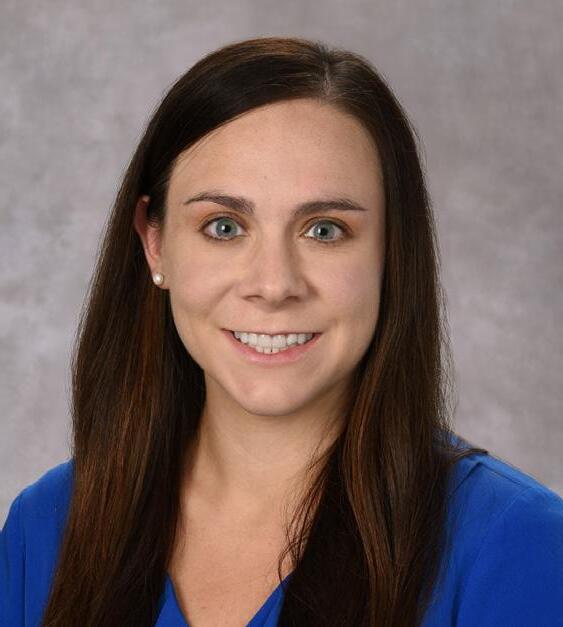


It seems like only yesterday – though it was actually over four months ago – when home prices in the Valley had dipped a bit and would-be buyers’ hearts might have fluttered.
The only thing many buyers in the Phoenix Mero area may be doing now is clutching their chest no matter where mortgage rates are.
New data from the leading analyst of the Valley’s housing market indicate that homesellers not only have regained their dominance but that prices are marching upward faster than expected.
And because of almost historically low inventories of re-sale homes, the Cromford Report said earlier this month that Realtors should “re-adjust buyers to expect increasing competition from each other as they chase a dwindling number of homes for sale.
“Sellers have recently been offering generous incentives, including substantial interest rate buy-downs. Those in-

centives are likely to reduce in value as sellers start to realize they have the upper hand in negotiations.”
The Cromford Report also told Realtors:
“If you have clients who think prices are going to fall further, ask them to explain where the new supply is going to come from that would cause that to happen. Prices are unlikely to fall un-
less supply rises to more than three months.
“Foreclosures remain very scarce and single-family home builders have dropped their production plans sharply, driven by an abundance of caution. With prices for new homes holding up well, they will probably regret that caution over the next several months.”
The report also advised that “sales
pricing continues to strengthen and the average price per square foot has now recovered to the levels we saw in September and October 2022.”
Realtor.com said that “the prospect of an outright price drop is looming on the horizon” for home prices nationally because of mortgage interest rates.
The site quoted a real estate investment teacher, who said, “Many sellers just aren’t getting what they want for their homes right now.”
But pricing in the Valley’s housing market remains pressured by low inventory.
“We have well below two months of supply, consistent with a seller’s market and less than half the 3.8 months we saw at the end of last November,” the Cromford Report said.
It said new U.S. Census Bureau data for February “confirms the same unusual trend that we saw in December and January. Single-family permits are very low while multi-family permits are very
see WARS page 29
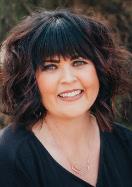 BY MINDY JONES GSN Columnist
BY MINDY JONES GSN Columnist
The real estate market seemingly decided overnight that it does not want to be overshadowed by the weather and in turn will begin heating up immediately with Gilbert once again leading the pack with the biggest monthly market shift in the Valley.
While many of the market conditions
that have led to the increase in prices over the last few weeks have been slow, improvement in market conditions in Gilbert has definitely sped way up.
We hit some major milestones last week including the highest monthly average sales price per square foot in six months.
That is another sign that our market is being driven by the lack of inventory more so than the fluctuation of interest rates, which have returned to a more palatable number.
The further we get from historic
lows of both inventory and interest rates, the more consumers begin to calibrate their expectations based on long-term averages instead of shortterm anomalies.
With selling conditions based fairly on competition and buyers still having more options than they had at the height of the global pandemic - we’re in a mild sellers market that is gaining traction with lighting speed.
With fewer than 100 homes coming to the market since April 1 in Gilbert alone, it’s hard to predict anything other than
continued price appreciation for Gilbert homeowners and a sense of urgency for those who want to get into the town.
Prices have returned to pre-fall 2022 numbers – which means that anyone still waiting for a market correction here in Gilbert has missed it.
With nearly half of the inventory we had just a month ago, town residents are seeing fewer homes cancelling or expiring and instead watching them sell for nearly their list price, and some-
see JONES page 30
high.”
“It seems that the construction industry has collectively determined that the mix of homes in Maricopa and Pinal is going to change in favor of multi-family and away from single-family,” it added. “This is probably a result of the low affordability we are now facing.”
The National Association of Home Builders reported a few weeks ago the supply picture is not likely to change any time soon.
“Homebuilders continue to face challenges in terms of higher interest rates, elevated construction costs, and access to critical materials like electrical transformers,” the association said, adding that recent bank failures may put additional pressure on builders.
“The lack of existing home inventory means demand for new homes will rise as interest rates decline over the coming quarters,” it said. “Indeed, there was an increase for sales of homes not yet started construction in February.”
Meanwhile, the Cromford Report

took a shot at some YouTube videos that are suggesting a wave of foreclosures is about to hit the Valley.
“ There has always been a lot of ill-informed, simplistic and childish speculation about the housing market,” it said. “But these days dozens of these people have YouTube channels and the crazier
their pronouncements, the more views they are likely to get. …They are not trying to be a balanced and astute observer of the market. They are trying to shock you. Selling disaster in all forms is a proven way to get attention.”
Stating “the sheer recklessness of the pronouncements made on YouTube still
amazes me,” it advised Realtors that if their clients take these YouTube pronouncements to heart, “they are going to find out that real-life differs dramatically from the insane forecasts by these self-appointed experts.”
To beat down those predictions of some big spike in foreclosures, the Cromford Report said, “One day this forecast might come true. It tends to happen once every 50 years or so, and certainly did happen in 2006 through 2011. But the actual numbers, when read with intelligence and insight, blow this foolish forecast out of the water.”
It noted that some people were predicting a flood of foreclosures would follow the pandemic, when a moratorium was in place on such actions.
Those predictions turned out to be wrong.
“Clearly when the moratorium stopped, foreclosures increased, but by a surprisingly small amount, to reach an extremely low level compared with the long-term average,” the Cromford Re-
see WARS page 30



times more than, with just a 2% gap on average.
If we didn’t list any new homes after today we’d have just one month until we had nothing for people to buy here in Gilbert.
So, we expect it to become increasingly difficult for buyers to get these concessions over the next couple of months when we expect many will finally try to right-size their home between school sessions.
WARS from page 29
port said.
“By the time the moratorium was lifted, pending foreclosures had declined a to level I would have previously considered impossibly low – around 500. That is just 10% of the bottom of the normal range,” it continued.
“And then when the moratorium ended, pending foreclosures almost DOUBLED to between 800 and 1,000. But the
We’re not seeing much in the way of single-family permits for new construction and we’ve likely seen the most significant drop of rental inventory return to the market with most landlords waiting for positive annual appreciation before releasing their investment.
More homeowners instead are considering turning their primary residence into a rental property to release equity, create a new stream of income, and help with down payment and moving costs into a home that better fits their needs.
1,000 level is still only 20% of normal. The current count is trending slowly higher, but remains unusually low and shows absolutely no sign of getting back to normal, never mind excessive, anytime soon.”
It also noted that national compilers of loan performance data “tell us that delinquency remains at a very low level” and said:
“These reports will provide an early warning if foreclosures may be coming


With single-family rental prices higher than they were this time last year, the opportunity for buyers is incredible and supports the fact that we’re seeing twice the number of purchases than we did just last quarter.
The more purchases, the more competition, the faster prices rise – and that’s exactly where we’re at.
With continued job growth in the area and without new construction adding much to the supply picture, many homeowners will find themselves at a crossroads between calling a contractor and
back in fashion. At the moment they are not showing any warning signs at all.”
“If someone tells you there is a foreclosure wave coming in 2023, you can safely ignore everything that person tells you about the housing market,” it added. “Most likely that person said the same thing about 2022 and every year before that. No need to argue, just ignore what they tell you.”
Cromford’s assessment pretty much conforms with other experts.
calling a Realtor.
Understanding that homeowners who have been in their homes for six years or more have on average appreciated by 89%, there is a significant investment to be made in the right next step.
And that means who you work with has never mattered more than it does now.
Mindy Jones, a Gilbert Realtor and owner of the Amy Jones Group brokered by EXP Realty, can be reached at 480-2503857, Mindy@AmyJonesGroup.com or AmyJonesGroup.com.
The market “will be uncertain and chaotic,” said Aaron Brown, an adjunct finance professor and Bloomberg columnist. “I don’t think we’ll get anywhere near as bad as 2008.”
The Cromford Report’s most recent look at the Valley’s 17 submarkets indicated that Chandler had the strongest market for sellers and that Phoenix wasn’t all that far behind, holding fourth place. Fountain Hills and Glendale held second and third, respectively.







SRP offers simple account management tools and tips that will save you time and money. Sign up for reminders about your energy usage, enroll in automatic payments or just pick the day you pay. SRP is here to help you simplify your account and your life.
Learn more at srp.net/account.
There’s never been a time where Bella Taylor has felt bad for herself due to her disability.
To both her and her family, her undeveloped arm is a representation of her personality. It’s also been the driving force behind her ability to succeed in numerous sports and other extracurricular activities throughout her childhood.
She expected people to doubt her. If anything, that added more fuel to her fire. Now a freshman at Perry High School, that fire is burning as bright as ever as she excels on the tennis court for the Puma varsity team as both a player and a figure of inspiration.
“I think it’s cool that people are inspired by it,” Bella said. “That helps me knowing that, rather than people being weirded out by it. People will tell me that I’m showing everyone can do anything

no matter what their circumstance is. “It makes me feel good being able to inspire others to do what they love.”
There’s no explanation as to why Bel-
la’s left arm stopped developing just below her elbow. Doctors suggested potential blood clots, but her mother, Elisa, simply shook her head and shrugged her
shoulders when asked about a diagnosis.
Elisa and her husband never wanted to hold Bella back despite her arm. They wanted her to be as active as possible in sports and other activities.
They were worried at times what the feedback from other kids would be when they saw her. But Bella proved to be thick-skinned and never let comments get to her.
Growing up, she swam competitively and was a goalie in soccer. When she was in the fourth grade, her parents decided to give tennis a shot. Elisa, who played tennis, admits she was concerned she wouldn’t be able to play the sport, mostly due to regulations with serves typically requiring two hands. But her trainer showed her a YouTube video of other athletes with one hand and the technique they used to serve.
From there, she perfected it.
see TENNIS page 34
Mark Martinez, who led the Campo Verde boys basketball team to its first-ever state championship in March, has stepped down after five seasons leading the program.
Martinez announced his departure in an email to booster club members Thursday, April 6 that included his resignation letter. A copy of the email was obtained by The Tribune. Campo Verde Athletic Director Max Ragsdale confirmed Martinez’s decision in a text message.
“After careful consideration, prayer and talking with my family, I have decided to step down as the Head Coach
of Campo Verde Basketball,” Martinez wrote in the email to boosters.
“After 18 years, this was not an easy decision, but at this point in my life I need to prioritize improving my health and just as important being there for my wife and 2 kids more consistently.”
Martinez took over the Campo Verde basketball program in 2018, winning 13 games in his first two seasons. The Coyotes began to make progress in 2021, going 15-9 and making the postseason for the first time under him as head coach.
This past season, it all came together.
Led by a stellar senior class headlined by NAU signee Isaiah Kai, the Coyotes rolled through competition at the 5A

Phil Cardis knows all too well what a positive experience with a coach can do for young baseball players. He provided that for his own kids in Red Mountain Little League in Mesa and through his East Valley-based club, AZ Wildfire.
So, he jumped at the opportunity to move up in the ranks and applied to become the next head baseball coach at San Tan Charter, where both of his kids attend. He was officially named head coach beginning in the 2023-24 school year on April 4.
“I’m just thankful for it,” Cardis said. “I’m thankful for the opportunity to help them and considering and giving us the opportunity. I look forward to having a successful program that’ll have great kids with high character.
“Hopefully that translates to success on the field going forward.”
Cardis’ background with youth baseball is extensive in the East Valley.
For many years he helped run Red Mountain Little League Baseball, both as a parent volunteer and as the league president during the height of the pandemic. Cardis was forced to shut down operations for the year, much like the rest of youth sports leagues, and navigate through it to host a season the following year.
CAMPO from page 32
level and finished as the top seed in the conference after losing in the Open Division playoffs.
Campo Verde went on to beat Higley, Cienega, Centennial and Millennium for the 5A title. In both the semifinals and finals, the Coyotes were perceived as underdogs, which allowed them to play with a chip on

He also was part of the staff that helped reignite the Wildfire baseball club in 2021. He, alongside partner Don Peters, now provide an outlet for youth and teen baseball players to play outside of the high school and junior high seasons.
Many players from the Wildfire play for San Tan Charter in the spring, including Cardis’ two sons, George and Luke. He said there’s a strong alignment between the high school and club team as it relates to character development.
their shoulder on their way to winning the championship.
“I want to thank all of my players, both past and present, for helping to build the Campo Verde Basketball program,” Martinez said. “Next, I would like to thank my coaching staff for the countless hours they have put in to help cultivate the kind of culture we were able to establish here at Campo.”
Martinez coached basketball at the
“We’ve been fortunate enough, we’ve had a lot of kids in the Wildfire as well as other past stops that have been positively impacted,” Cardis said. “Just that record of what we’ve been able to do was probably a factor.”
Cardis, who is a managing partner for a Mesa-based law firm specializing in estate planning, probate, business, real estate and personal injury, played baseball growing up.
He appeared in the Pan American Games in Guatemala for Team USA and began his college career at the University
high school level for 18 seasons. He began as an assistant at Chandler before taking over Arizona College Prep. When the Campo Verde job opened after the 2017-18 season, he took it on as a challenge to build it into a power.
It took time and required buy-in from players, parents and administration. But he managed to get it done.
As he steps away to focus on health and family, he said he will continue to
of Wisconsin-Milwaukee. He finished at Luther College, a Division III school in Iowa.
While he hasn’t coached at the high school level or for a school, he feels he is ready for the challenge at San Tan Charter. He will inherit a program that has backing from school administrators and has begun turning the corner as a program this season at 4-2 through six AIA power point games and sits just one spot out of the 2A Conference play-in tournament.
“There’s a good foundation that’s there and I’m looking forward to adding to that,” Cardis said. “The goal is to have the same success they’re having this year. Which is great. But further than that, how do we sustain that success?
“Building upon the foundation that’s there and continue to progress forward.”
Cardis said he will continue to support the Roadrunners through the rest of the season. He will also begin building the off-season program that will consist of trainings.
He’s excited for the opportunity to lead a high school program. But more importantly, he’s excited to build teenagers into young men and help them succeed through baseball.
“When the season comes to an end, we’ll talk about plans going forward,” Cardis said. “You want to have a plan and execute that plan. That’s already in motion.”
teach on campus and help the basketball program until his replacement is found. Ragsdale said the job has been posted and he aims to have a new basketball coach in place soon.
“My time here at Campo Verde has been life-changing in so many ways and this past season could not have ended any better as we are State Champions,” Martinez said, “but it is now time for me to be a champion at home.”
“We just wanted to see if it was even possible for her to play competitively and have a legal serve,” Elisa said. “(The video) is what came up and she just tried to copy it and tweak it and that was it.”
Perfecting the serve was just one way Bella has been able to prove no challenge is too big for her.
“In the past, I would tell her things might be out of her league or a bit of a challenge. But that’s what she goes for the most,” Elisa said. “If she wants it, she’ll go for it. She’s a winner.”
Bella’s disability allowed her to relate to other athletes facing similar situations from around the world.
Elisa helped her connect with various Paralympic athletes through social media when she was younger, including Australian Paralympian swimmer Jessica Smith. Like Bella was inspired by Smith, Smith was inspired by her.
Smith and others offered advice, words of encouragement and even some coaching at times through direct messages. She was able to build a connec-
tion with them that still stands today. It was also one of the driving factors in her mindset to prove any doubters wrong.
And she’s been able to do that on the tennis court.
“She’s fearless with her stroke. She isn’t scared to swing the racket a little faster and put a little zip on the ball,” Perry coach Keith Castillo said. “Even though she’s a freshman, she’s hitting with that varsity speed. It’s paid off.”
Bella’s play speaks for itself.
She aligns herself along the back line of the court, racket in her right hand with the ball balancing on the springs. When she’s ready to serve, she angles the racket down toward the ground, allowing the ball to roll and come to a stop on the bumper before she quickly rises up, sending the ball into the air.
From there, she’s just like every other high-level tennis player. Her serves can be lethal due to the power she possesses. If it’s returned, she can counter with a powerful forehand or backhand, a shot that typically requires the use of two arms to get as much power behind it as she does.
It was that style of play that helped her earn the No. 3 spot on the varsity roster as a freshman. The Pumas did pool play games to determine placements. Bella shined in the moment.
“I definitely had to work for it,” Bella said. “I think I played 13 or 14 matches. It was definitely worth it. It felt pretty good.”
Bella’s main focus right now is to make the state playoffs and make a run at the title. Not only is she confident she can do that this year and over the course of her high school career, but her coach and family are, too.

Her older brother, Gabe, is a sophomore for the Perry tennis team. His twin, Ari, has also been a source of motivation for Bella after she was born with a brain hemorrhage.
The family is close, and they constantly support one another. Bella said one of her main goals is to simply make all of them proud. She admits she isn’t sure she’ll be able to play in college due to her disability. But she hasn’t closed the door
on other opportunities that may come on the tennis court.
For now, she aims to continue improving her skills. And most importantly, continuing to prove doubters wrong.
“I don’t need anybody to tell me I can or can’t play tennis,” Bella said. “I can do it on my own.”





1 Faux pas
5 Spider’s creation
8 Smith of Fox News
12 Wood strip
13 Hollywood’s Gardner
14 Model Banks
15 Twistable cookie
16 “Wonder Woman” star
18 Reproductive cell
20 Old Geo models
21 Conceal, in a way
23 Zodiac cat
24
28
31
32
34
3
4
41
5
6 Ms. Longoria
7 Lip soother
8 Iowa and Maine, e.g.
9 Lightest element
10 Slangy suffix
11 Bits of butter
53
56
57 Transmit
25













































































































